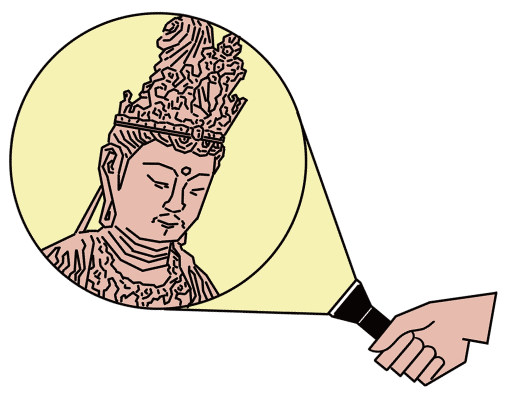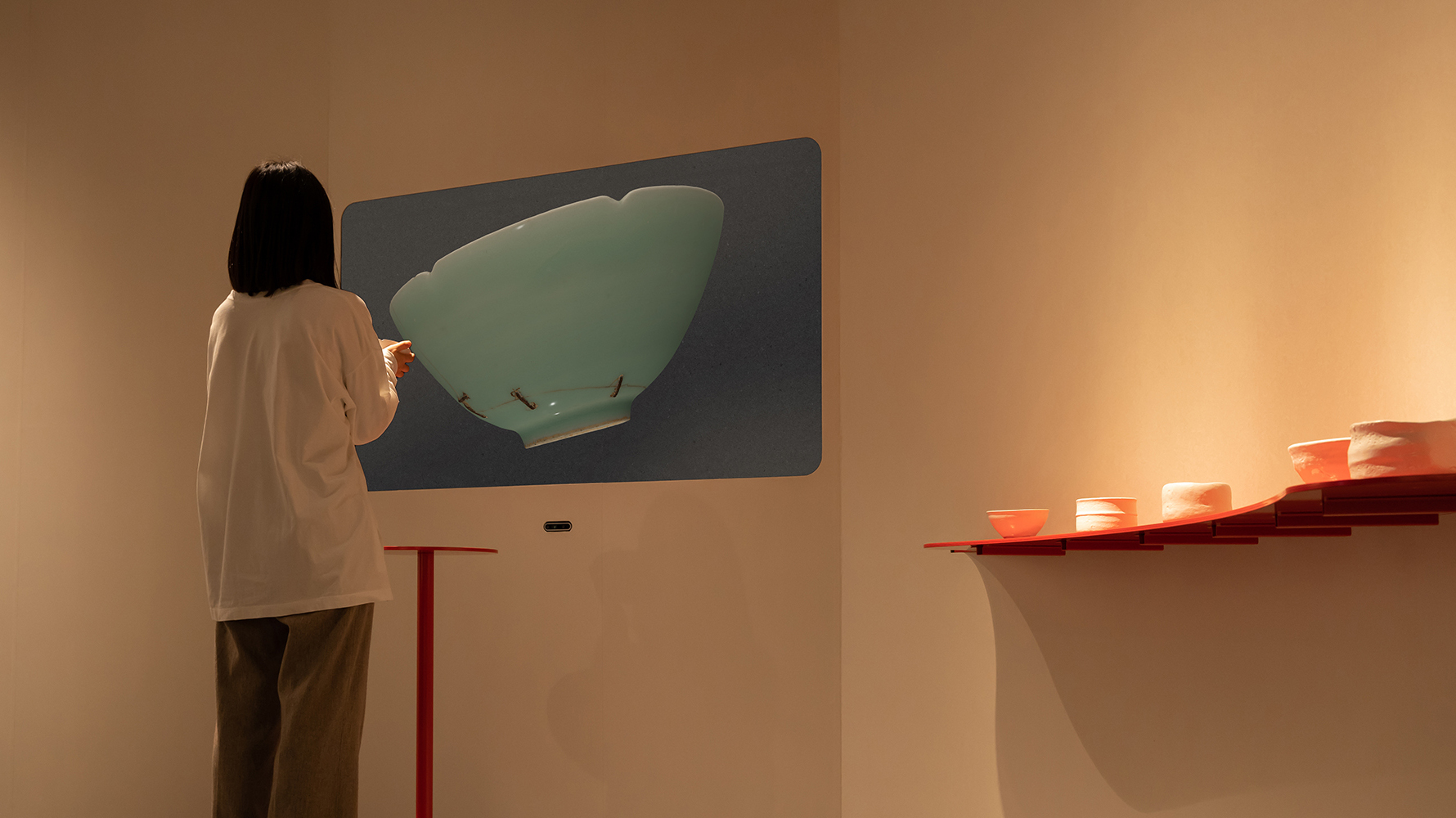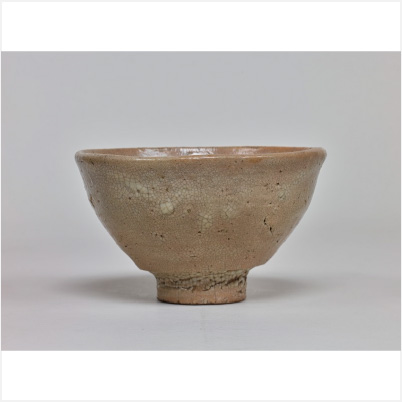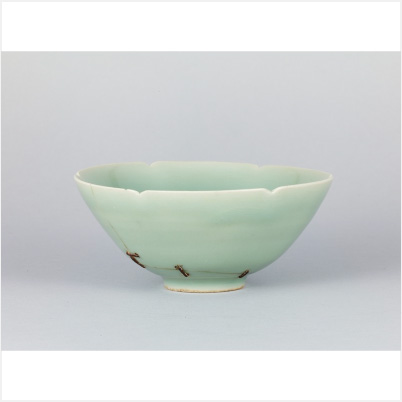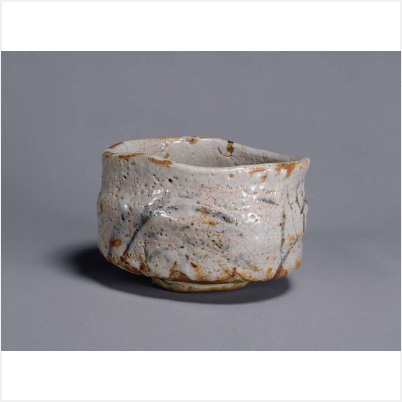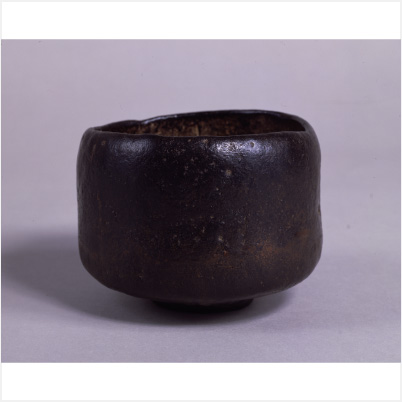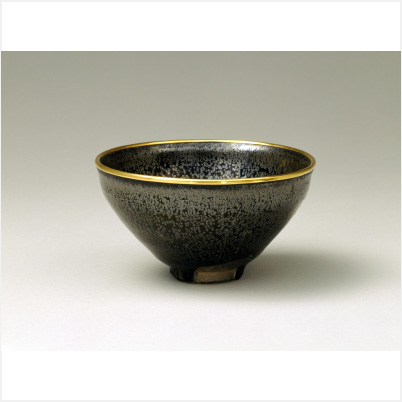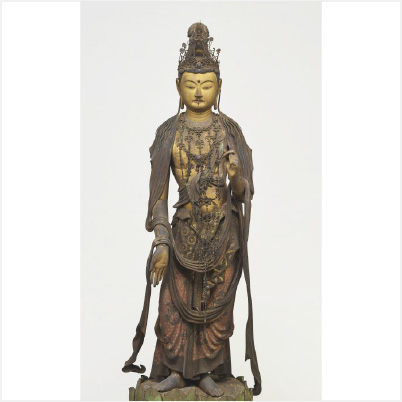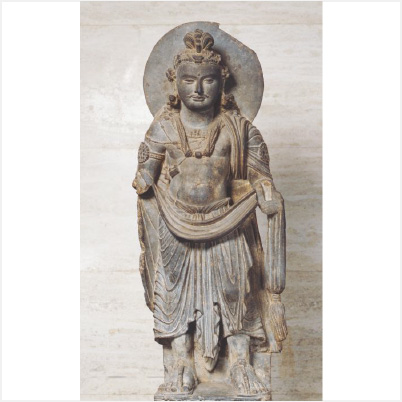Important Art Object
Tea Bowl, Named "Uraku Ido"
Joseon dynasty, 16th century
Bowls like this one were mass-produced for daily use on the Korean peninsula. Some were shipped to Japan, where tea masters admired their rustic, unpretentious style. One of this bowl's most admired features—the bumpy, crackled glaze—formed when the clay and glaze contracted at different rates after firing.

